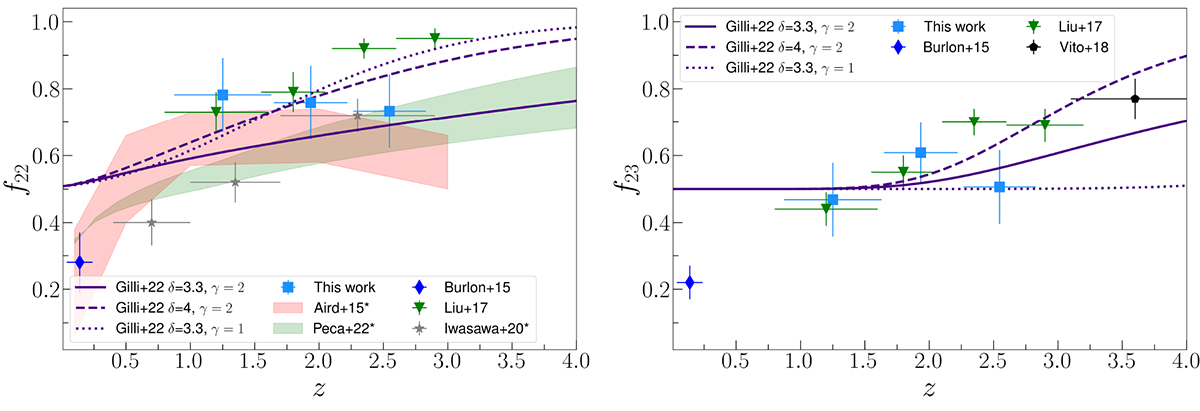Fig. 13.

Download original image
Fraction of log(L)∼44 obscured AGN with NH > 1022 cm−2 (f22) as a function of redshift. The light blue squares show the results from this work. The prediction of the Gilli et al. (2022) model for the evolution of the obscured fraction with the redshift is shown as the indigo lines, with different styles representing the different parameters of the model (see Sect. 5.2). Left: obscured fraction derived using NH > 1022 cm−2 as the threshold (f22). The results from this work are compared with those of Burlon et al. (2011, blue diamond), Liu et al. (2017, green triangle), Aird et al. (2015, red shaded), Iwasawa et al. (2020, gray star), and Peca et al. (2023, green shaded). The Aird et al. (2015), Liu et al. (2017), Iwasawa et al. (2020), and Peca et al. (2023) obscured fraction consider column densities up to 1024 cm−2. Right: obscured fraction derived using NH > 1023 cm−2 as the threshold (f23). The results from work are compared with those of Burlon et al. (2011, blue diamond), Liu et al. (2017, green triangle), and Vito et al. (2018, black pentagon). The Vito et al. (2018) obscured fraction consider column densities up to 1025 cm−2.
Current usage metrics show cumulative count of Article Views (full-text article views including HTML views, PDF and ePub downloads, according to the available data) and Abstracts Views on Vision4Press platform.
Data correspond to usage on the plateform after 2015. The current usage metrics is available 48-96 hours after online publication and is updated daily on week days.
Initial download of the metrics may take a while.


